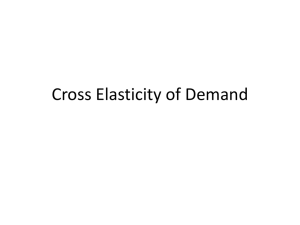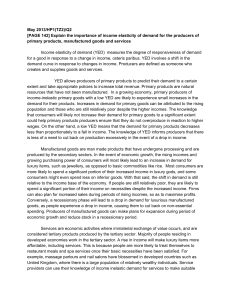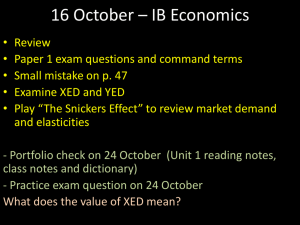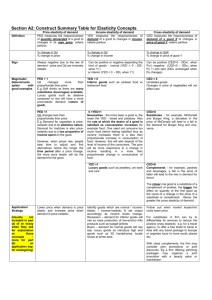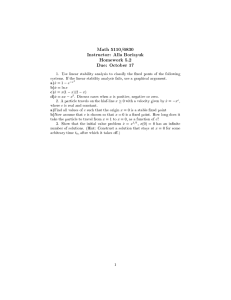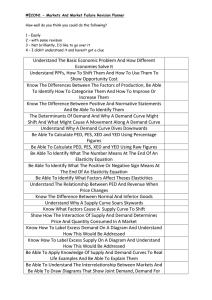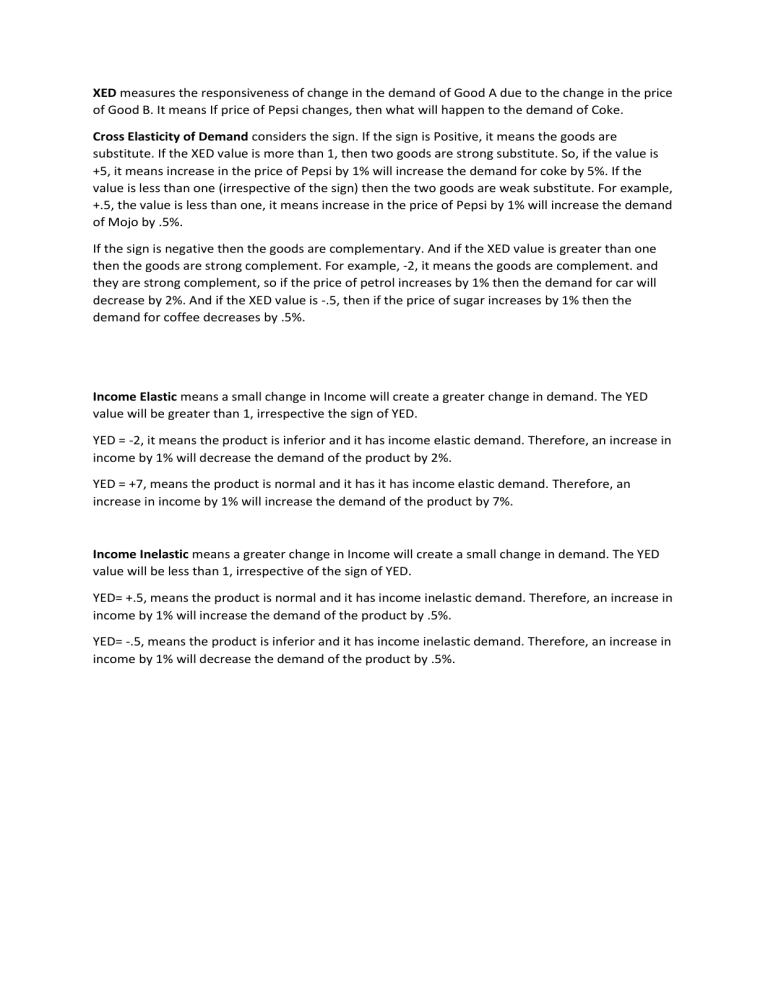
XED measures the responsiveness of change in the demand of Good A due to the change in the price of Good B. It means If price of Pepsi changes, then what will happen to the demand of Coke. Cross Elasticity of Demand considers the sign. If the sign is Positive, it means the goods are substitute. If the XED value is more than 1, then two goods are strong substitute. So, if the value is +5, it means increase in the price of Pepsi by 1% will increase the demand for coke by 5%. If the value is less than one (irrespective of the sign) then the two goods are weak substitute. For example, +.5, the value is less than one, it means increase in the price of Pepsi by 1% will increase the demand of Mojo by .5%. If the sign is negative then the goods are complementary. And if the XED value is greater than one then the goods are strong complement. For example, -2, it means the goods are complement. and they are strong complement, so if the price of petrol increases by 1% then the demand for car will decrease by 2%. And if the XED value is -.5, then if the price of sugar increases by 1% then the demand for coffee decreases by .5%. Income Elastic means a small change in Income will create a greater change in demand. The YED value will be greater than 1, irrespective the sign of YED. YED = -2, it means the product is inferior and it has income elastic demand. Therefore, an increase in income by 1% will decrease the demand of the product by 2%. YED = +7, means the product is normal and it has it has income elastic demand. Therefore, an increase in income by 1% will increase the demand of the product by 7%. Income Inelastic means a greater change in Income will create a small change in demand. The YED value will be less than 1, irrespective of the sign of YED. YED= +.5, means the product is normal and it has income inelastic demand. Therefore, an increase in income by 1% will increase the demand of the product by .5%. YED= -.5, means the product is inferior and it has income inelastic demand. Therefore, an increase in income by 1% will decrease the demand of the product by .5%.
